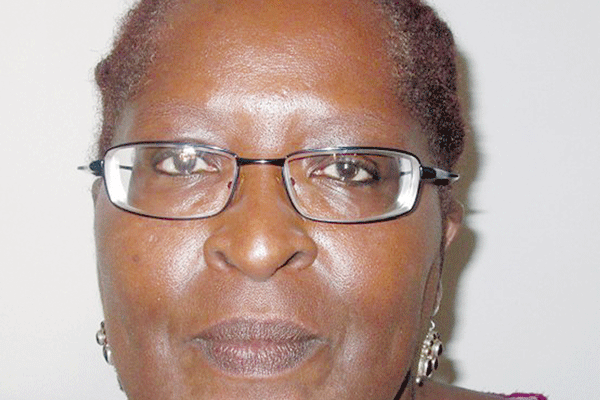
THE move by the Reserve Bank of Zimbabwe (RBZ) to force banks to reduce their transaction charges will lead to increased financial inclusion but it will also eat into the banks’ profits, analysts have said.
BY MTHANDAZO NYONI

The RBZ last week slashed cash withdrawal charges following an outcry from the banking public who felt they were being short-changed by financial institutions.
The new charges have been put at 1% of amounts withdrawn at automated teller machines (ATM) and 1,25% for withdrawals over the counter.
Before the country started facing liquidity challenges, banks charged between $1,50 and $2,50 regardless of the amount withdrawn.
Some banks charged as much as $3 to $5,50 for withdraws done over the counter.
However, bankers and economic analysts contacted by the Standardbusiness last week said even though the new charges would lead to financial inclusion, it would also eat into banks’ profits.
“I think there has been an outcry over high bank withdrawal charges. It’s true the charges were on the high side. For sure this represents loss of income for banks but it’s understandable,” said a leading banker who preferred anonymity.
- Chamisa under fire over US$120K donation
- Mavhunga puts DeMbare into Chibuku quarterfinals
- Pension funds bet on Cabora Bassa oilfields
- Councils defy govt fire tender directive
Keep Reading
The banker said what this meant was that banks’ profitability would be under pressure as transaction fees was the largest contributor to income.
“However, banks will be affected differently. Some banks with diversified income streams will be least affected. However, this comes at a time when loans advanced to the private sector have been declining too, meaning banks are not making as much money from lending. Over time, continued decline in profitability may jeopardise the banks’ target to meet $100 million capital requirements by 2020,” the banker said.
Banks have been reducing their lending as they fight to cut on default rates which reached a high of 20,45% in 2014.
In the first six months of the year, the average non-performing loans ratio was 10,05%, meaning that for every dollar given as a loan, about 10 cents was not being repaid.
In the first half of the year, the loan to deposit ratio in the banking sector was 63,11% from 72,84% in the same period last year.
The banker, however, said RBZ made an important sacrifice in order to restore confidence which was at its lowest level. He also said banks would charge different charges as they had different cost structures.
Another economic analyst, Reginald Shoko said the banks had been making a lot of money from these charges and as such, the new regime was welcome.
“The new measures will eat into the profits of the banking sector but on the other hand, this will encourage the use of point of sale systems across the economy by the general public,” he said.
“This will increase the much-needed cashless transactions. In the long run, it might reduce the queues from banks if the central bank goes a step further to mobilise people to do cashless transactions.”
RBZ is pushing to have 80% of society cashless by 2020.
Economic analyst John Robertson said while the new charges would reduce banking costs and leave people with an extra dollar, “it is not going to make any difference for buying power”
“I am sure people will be pleased. However, it is going to be a challenge to the banks because a number of them have been relying on transactional charges for profits,” he said.
Despite the harsh economic environment, the banking sector has bucked the trend, posting profits while companies in other sectors have stuttered.
In the first half of the year, aggregate net profit in the banking sector doubled to 68 million from the comparable period last year. As many as 17 out of 18 operating banking institutions recorded profits during the period.
Consumer Council of Zimbabwe executive director, Rosemary Siyachitema said the new bank charges were a step in the right direction.
“It’s a step in the right direction because we have been pushing for that. The charges were unreasonably high. However, it’s not the means to an end, meaning we need to continue revising them,” she said.
She said people should embrace electronic transactions as the world was moving towards that direction.
However, policy and economic analyst Butler Tambo, said even though there had been a review on withdrawal charges, there were some other fees that were on the high side and hence worked against moves to promote financial inclusion.
“What has been reduced is the withdrawal cost and not the account maintenance fees which are deducted monthly from bank clients’ accounts and range from $5 to $20 depending on the bank and type of account held,” he said.
Efforts to get a comment from the Bankers Association of Zimbabwe were fruitless since Tuesday last week as its president, Charity Jinya did not pick calls or respond to emails sent to her.
A survey conducted by Standardbusiness last week showed that all banks in Bulawayo had complied with the new bank charges directive.
Barclays, which had reportedly failed to comply on the first and second day of the announcement on Thursday, issued a statement assuring its customers, clients and stakeholders that it was compliant with the reduction of cash withdrawal charges as announced by the apex bank.
“The bank experienced a slight system delay due to the incorporation of new charging structures which resulted in some customers being charged the previous withdrawal rates on the 12th and 13th of December 2016,” read part of the statement.
“We can confirm that this system change has since been implemented and customers who were charged the previous rates on these dates will be reimbursed with the difference in their accounts. Any inconvenience caused to our customers is sincerely regretted.”











